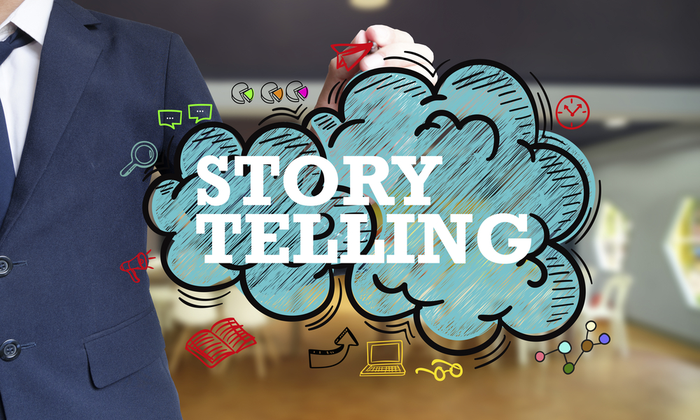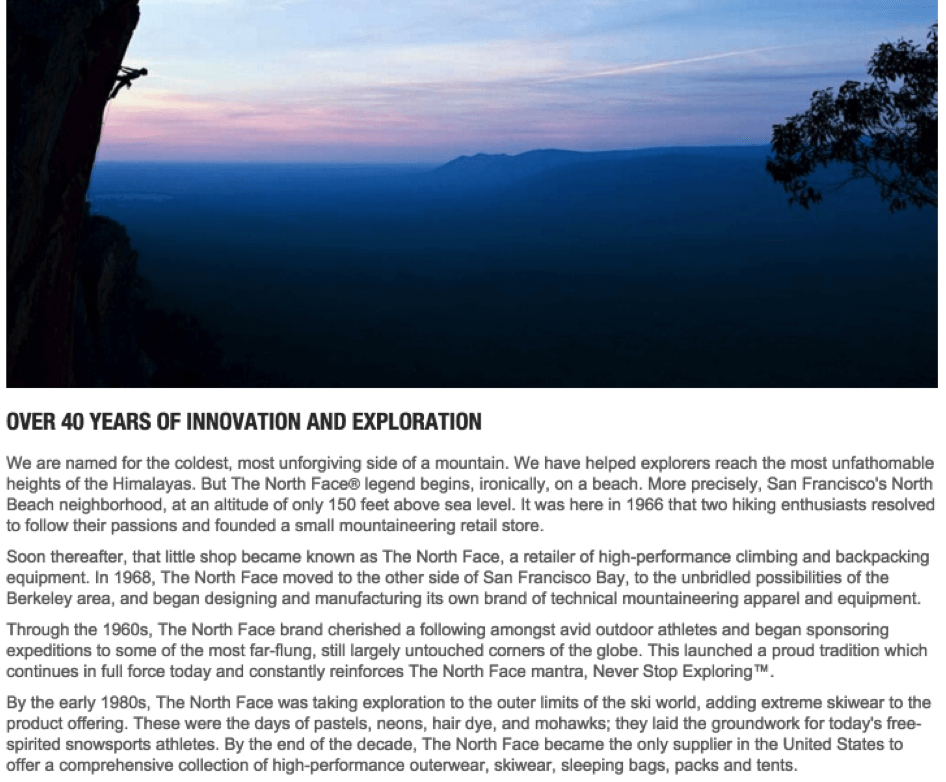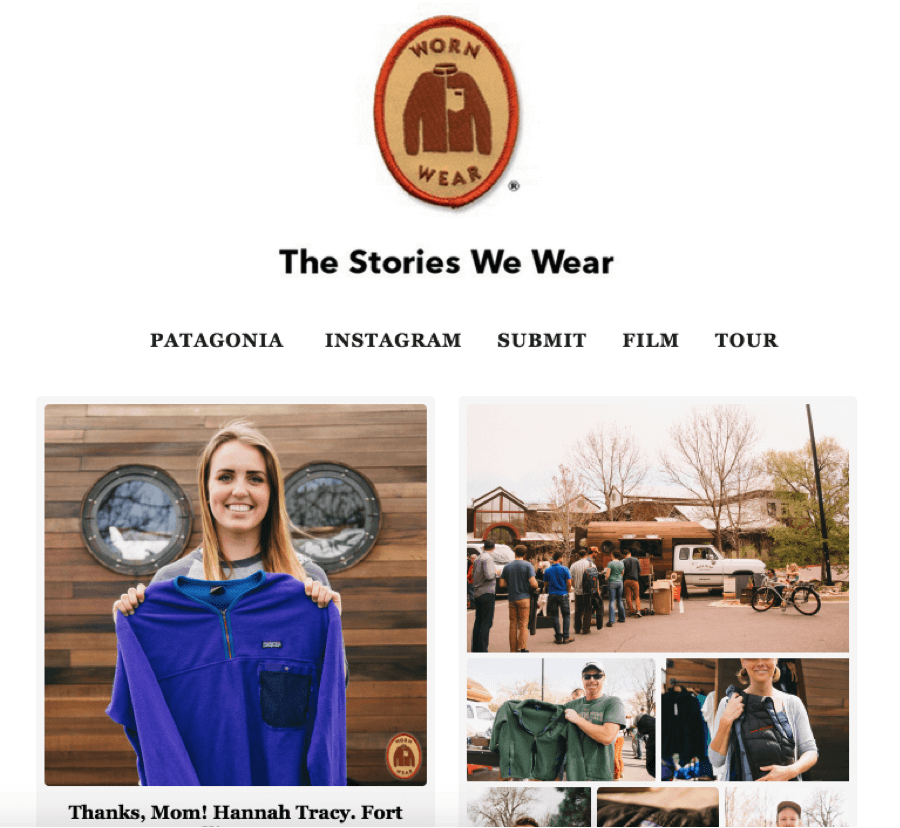
Storytelling is all the rage. More and more brands understand the power of stories to transform their online presence and build trust.
Iconic brands like Disney and Coca-Cola have long realized the power of their brand story to build a connection with their audience. Companies like Apple possess brand stories that are legendary in their status.
What’s in a story, though? How does the story develop authenticity? More to the point, how does a brand story create that trusting feeling that customers crave?
Brand Stories Create Trust
There is a good reason for the popularity of stories among brands, businesses, and individuals.
Stories are a powerful tool in human communication. Research shows that the human brain responds to the descriptive power of stories in deeply affecting ways, influencing both the sensory and motor cortex.
To read a story is to feel an experience and to synchronize our minds with the subject of the story.
Scientists call it neural coupling.
In the process of neural coupling, a speaker and a listener share a story that allows their brands to interact in a dynamic way.
No, this isn’t “mind-meld,” even though some scientists use that term in an effort to describe it. It is a brain activity that occurs in two people simultaneously, affecting the same areas of the brain during the process of storytelling.
Princeton researchers use the mirroring metaphor: “The listener’s brain activity mirrors the speaker’s activity.” Successful neural coupling produces greater comprehension, understanding, anticipation, and receptivity.
The net effect of comprehension, understanding, anticipation, and receptivity is trust. By telling a story and connecting with the reader, a storyteller can actually generate trust in the reader.
Stories produce trust. But not just any story will do. You must tell a story that has the right features — features that produce successful neural coupling, plus those which exhibit integrity-building features.
How do you create a brand story that builds trust?
Your Brand Story Needs Personality
Susan Gunelius has the best description of this:
Brand stories are not marketing materials. They are not ads, and they are not sales pitches. Brand stories should be told with the brand persona and the writer’s personality at center stage. Boring stories won’t attract and retain readers, but stories brimming with personality can.
In other words, your story shouldn’t be by some godlike figure who dominates the legend and infuses the company with life and power. No. Instead, your story is inspired by the presence of people who participate, create, connect, and develop the saga of growth and success.
Personality drives the story, but the story isn’t a biography of an individual. It’s the evolution of an entity told with personality.
People trust other people. The core reason why your story should be personality-driven is so that it will provide someone real for customers to trust.
Keep Your Brand Story Simple
Buffer’s story is simple. Even though the description of the company’s origin takes up a few thousand words, it is conceptually straightforward:
- Problem
- Solution
- Success
That’s it. If we try to cram more into the story, we lose the momentum that is integral to its success.
Simple stories are better. Science says so, and experience affirms it. While we may love the complexity of a Harry Potter plot, we can’t import that same complex model into the brand story. We need simplicity.
Every story has a beginning, a middle, and an end. The three-part model mentioned above carries this natural progression:
- Beginning: Problem: Explain the problem that you set out to solve.
- Middle: Solution: Describe how you solved it.
- End: Success: Get excited about the success this produced.
This is the form of a story that people expect. Everything has a beginning, right?
Be careful with the ending, however. It shouldn’t feel like the end of the road, but rather the beginning of a new adventure.
Simple stories are more trustworthy. As some of the world’s most famous brands have shown, the complexity of the story can erode trust.
Focus on Why Your Brand Exists
Why does your business exist?
The answer should be a story.
An answer such as “to make money” is short-sighted. Your business might be making money. That’s fine and well. But why does your brand exist? What is the reason?
The answer to that question requires that you tell a story.
A brand like TOMS shoes uses its story as a bedrock for its existence. The tagline, “One for one,” means that for every purchased pair TOMS gives a pair of shoes to someone in need. TOMS exists to improve lives.
Their story describes the whole reason for the existence of the company. That builds trust. Careful customers are asking “why should I buy from you?” If you can answer that question with a real story, then you’ve built the trust of that customer.
Use Your Story to Connect with Your Customers
At its essence, a story isn’t really about your company. Your company is the construct, but the goal of the story is to create a connection with your customers.
Tell your story in such a way that it tells your customers “we relate to you, we understand you, we are like you.”
Few things can communicate that level of engagement like a story can.
A brand like North Face connects with active and adventure-minded people. The whole idea of the brand is to inspire adventure and outdoor life. Their mantra is “Never stop exploring.” The brand’s story communicates this ideal.
The kind of customer who wants to be part of this story will resonate with North Face’s origins and legacy.
When your story connects with the target customer, you build trust. You win.
Remember: Customers Buy a Part of the Story, Not Just a Product
I wrote, “customers buy part of the story” (not just be part of the story). The distinction is critical.
Why? Because a customer is not only participating in the story itself, but they are participating in a monetary way. They engage the story by purchasing from the business that is telling the story.
When a customer purchases your product, they must feel as if they are buying part of your brand story.
The best way to explain this is to use the example of Patagonia, a brand that takes this to a whole new level.
Patagonia uses the term “worn wear” to describe their clothing products that have endured for years. The product themselves, items that customers buy, are part of the brand’s story.
Patagonia aptly calls this “the stories we wear.” It’s such a big deal that Patagonia made a movie about it.
This is the ideal form of storytelling. Why? Because it places the story directly into the product itself. Customers are buying that product, and in so doing, they are buying the brand story.
The customer owns the story; therefore, they trust it. The customer is now part of your story. They’ve bought into it. Literally.
Get Other People to Tell Your Brand Story
I’ve described what the story is, but what about the how? How do you do this?
In one sense, the story takes care of itself. A good story is shareable. Others will appreciate and engage in the story. That being said, there are a few things that you can do to enhance the stories virality:
- Build your personal brand. Remember how a story is infused with personality? You and your team are the personalities behind this. Grow your reach through your personal brand.
- Be active on social media. Stories will spread through the power of social media. Snippets, extracts, and anecdotes are passed around, retweeted, liked, and explained bit-by-bit. Meanwhile, you build a presence and a brand that lives in public social consciousness.
- Tell the story everywhere. Make the story part of who you are and what your company is. Communicate using the power of the story. Whether you’re writing a guest post, piecing together a biography, or just tweeting about your day, give your story and elemental presence.
- Encourage your customers to tell the story. Customer testimonials are one of the most effective ways of broadcasting your story. Customers themselves will experience the problem//solution//success momentum of the story. If they’re satisfied, they will be more than happy to crow about it. Use these stories on your website and marketing materials. They will reinforce the brand’s story.
- Encourage storytelling everywhere. When your brand hits the mainstream, its story will become further entrenched in public awareness. Don’t suppress any accurate telling of your brand’s story.
A great example of successful brand storytelling comes from Ben Silbermann, co-founder of Pinterest. Although a soft-spoken and reserved guy, Ben tells his story with passion and authenticity. His personal brand grew as he and his team told the story. It grew.
Stories are a vehicle for building trust and belief. When people hear your story in more places, it reinforces their trust. And when they start telling your story themselves, they trust it even more.
Time needed: 3 minutes.
Brand stories are a powerful way to build trust. But how do you create an authentic story?
- Add Personality
Brand stories should be told with the brand persona and the writer’s personality at center stage.
- Keep Your Story Simple
Simple stories are better. Science says so, and experience affirms it.
- Focus on Why Your Brand Exists
Why does your brand exist? The answer should be a story, like TOMS “one for one.”
- Connect With Your Customers
Let your story show how you relate to your customers and how you understand them.
- Remember Customers Buy Your Story, Not Just Products
When a customer purchases your product, they must feel as if they are buying part of your brand story.
- Get Others To Tell Your Story
Encourage customers to share your story in their own words.
Conclusion
Stories are powerful. But don’t get stuck in your story.
Remember, a story is a framework for a business’s life. The story shouldn’t create a trap but serve as a catalyst. Some brands get so caught up in their story, that they neglect the value of their present activation. Although you can honor your brand’s heritage, you should still live in the present.
The great thing about a story is that it lives on. Real stories keep on telling, keep on going, and keep on connecting with people. Keep your story alive by continuing to impress your customers and give them the best experience possible.
Your story will build the foundation of trust, but only a customer’s personal experience will cement that trust into something that lasts.
How are you going to tell your brand’s story?
This marketing news is not the copyright of Scott.Services – please click here to see the original source of this article. Author: Neil Patel
For more SEO, PPC, internet marketing news please check out https://news.scott.services
Why not check out our SEO, PPC marketing services at https://www.scott.services
We’re also on:
https://www.facebook.com/scottdotservices/
https://twitter.com/scottdsmith
https://plus.google.com/112865305341039147737
The post How to Create an Authentic Brand Story that Actually Improves Trust appeared first on Scott.Services Online Marketing News.
source https://news.scott.services/how-to-create-an-authentic-brand-story-that-actually-improves-trust/





No comments:
Post a Comment